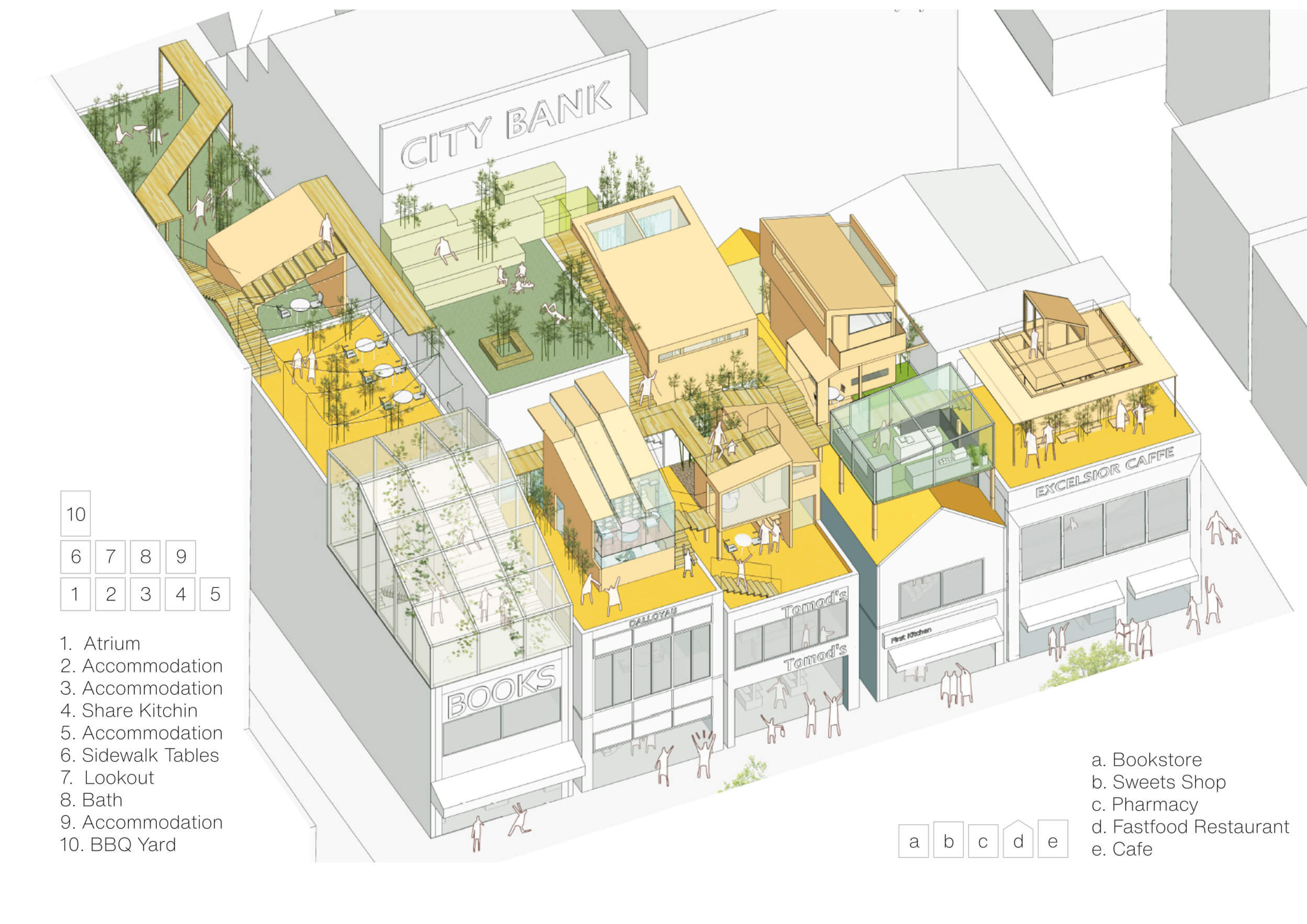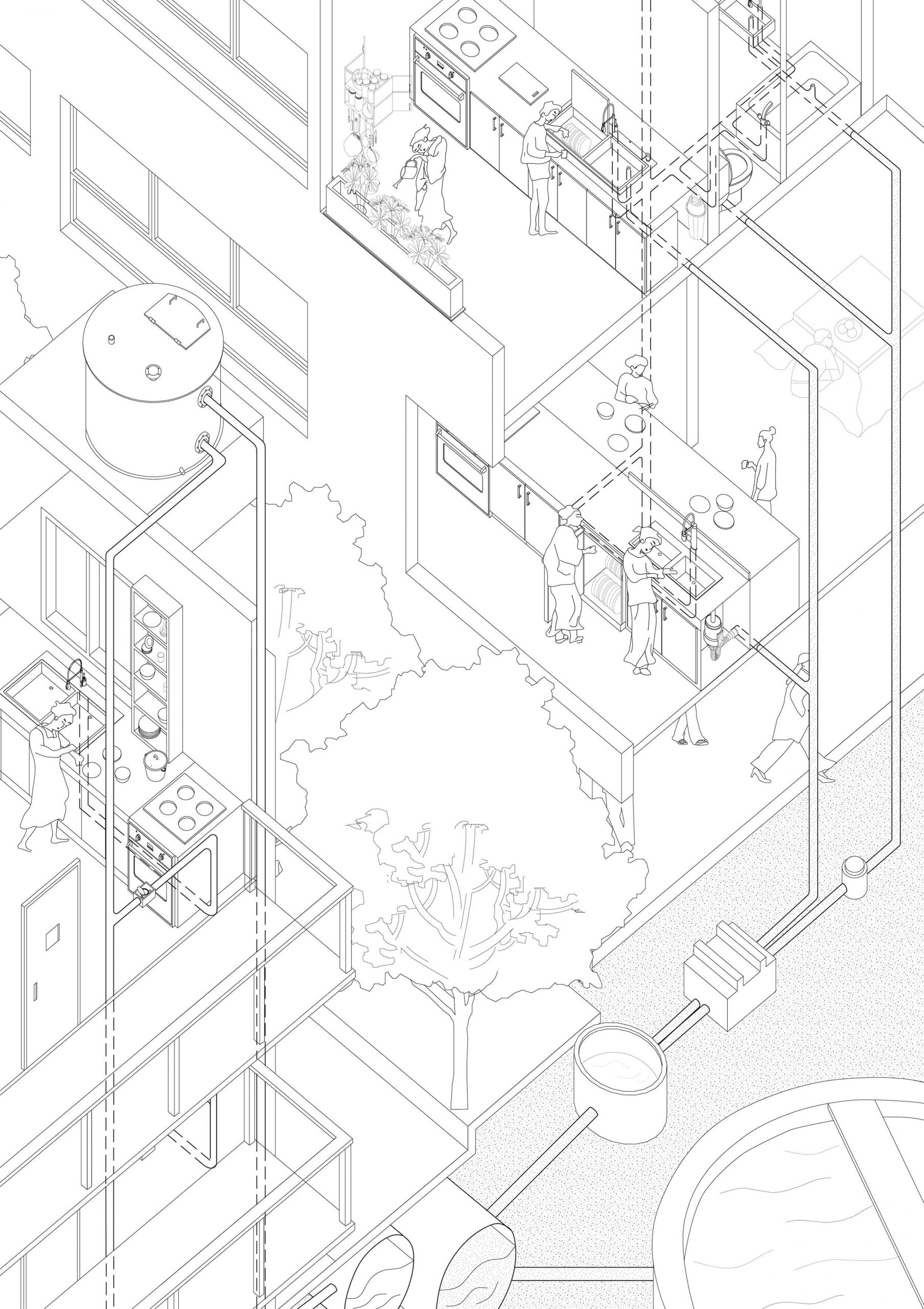The area in front of Jiyugaoka station North exit is exposed to intensive flows of people as well as various things and events in the town. From early morning to midnight, scenes change constantly through local people’s ac- tivities, the tides of 160,000 commuters and visitors a day, car and train fluxes, and the operations of shops and offices, all of which punctuate the apparently chaotic scenes into unique rhythms of the town like slow breath- ing.
Now almost buried among recent high-rise buildings, five two-storey shops facing the sta- tion square still remain as the face of the town, and one would notice the shops share an un- even yet similar-height roofline. Once noticed, the contrast between new high-rises and the surviving low-rises looks like a reminder of old Jiyugaoka back in the rapidly fading past.
Our accommodation project “YOUR PRIVATE SKY” redefines the now-hidden roofline into an open space for the shop customers and lo- cal and visiting rooftop lovers, while providing special access to sky and townscape only with the guests.
Student: Jin Gu
Sink
While the shape and function of the sink has remained largely similar throughout its modernization, as a network it has greatly changed through time, perhaps most tangibly expressed in the reduction of the visibility of water in Japanese daily life. Even though water-supply systems were introduced within cities in the Edo Period, daily water management still entailed close human interactions: guarding the water source, lifting water from the well, common laundry activities, etc. Although the widespread introduction of underground water-piping systems and pumps after World War Two enabled the direct delivery of water to individual apartments, wastewater still remained open and thus visible. Further improvements in the closing decades of the twentieth century, in the form of pressure pumps, facilitated universal direct supply, even to multistory buildings. At the same time, grey water and black water are now systematically transported to treatment plants through a sewage system, hidden from sight, before being fed back into rivers or the sea.
Toilet
Equipped with sound effects, deodorizers, sanitizers, automatic lid-opening and -closing systems, as well as washlets and seat-heating mechanisms, Japanese toilets are striking in their modernity and comfort. Animated and interactive, and due to their digital technology reaching a new dimension of anthropomorphism, they surpass by far their Western, mostly mechanized equivalents. Yet as contemporary as all these effects might seem, more than anything they recall core features of the traditional Japanese house: the sound imitates the running water outside the home, the deodorizing smell is a reminder of the Kinmokusei flowers planted beside outhouse toilets, the pre-warmed seat is the counterpart to the absence of heating in the traditional toilet.

